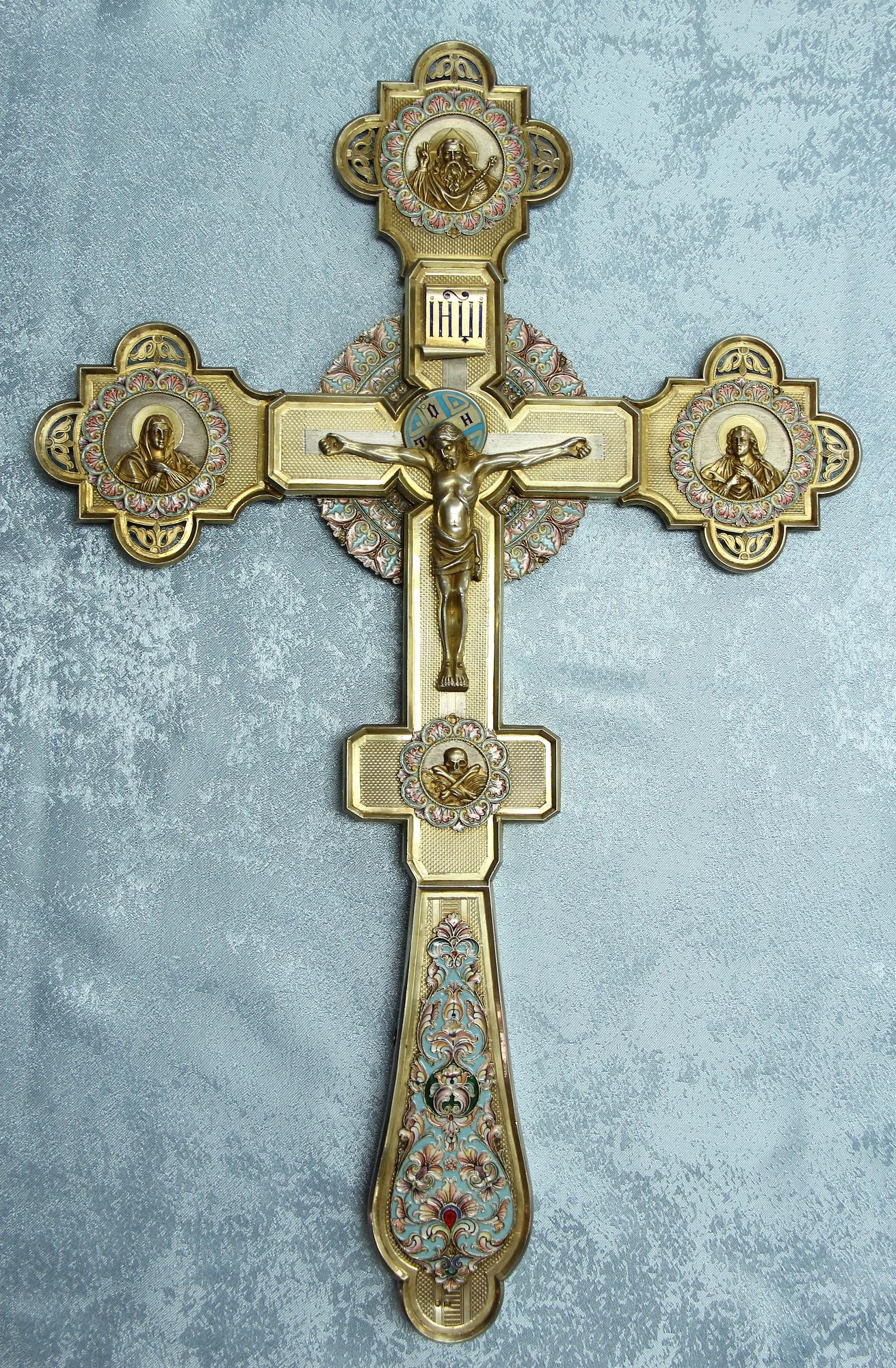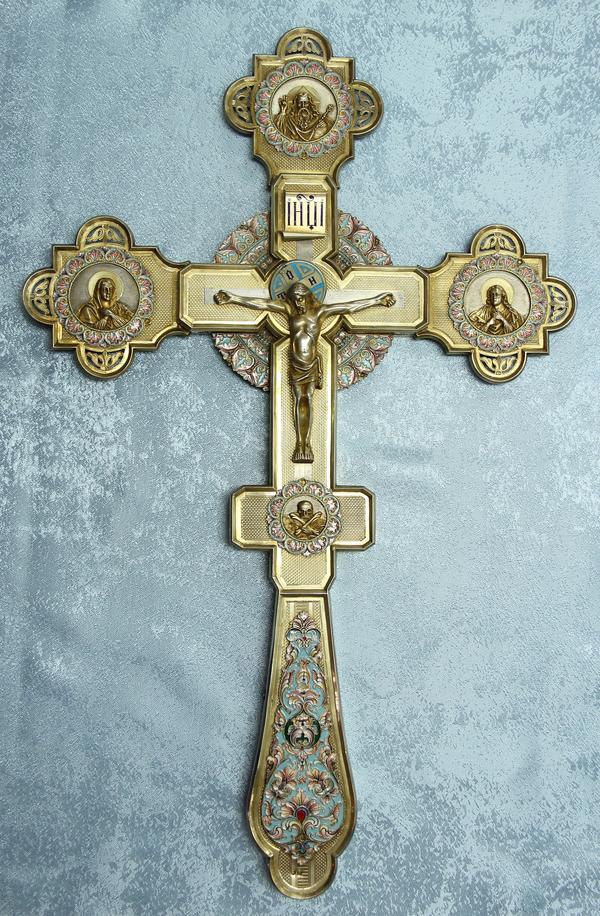An altar cross is a cross that is placed on the Holy table — a specially consecrated table in the altar space of a church. Together with a special four-angled cloth, called ‘antimension’, and a Gospel, it constitutes the main item of the altar in a church.
Such a cross is used during services and church sacraments: confession, communion, baptism, and wedding. It is also used to consecrate water, including consecration during the baptism ceremony, hence the cross is normally made of metal.
Such a cross is used during services and church sacraments: confession, communion, baptism, and wedding. It is also used to consecrate water, including consecration during the baptism ceremony, hence the cross is normally made of metal.


